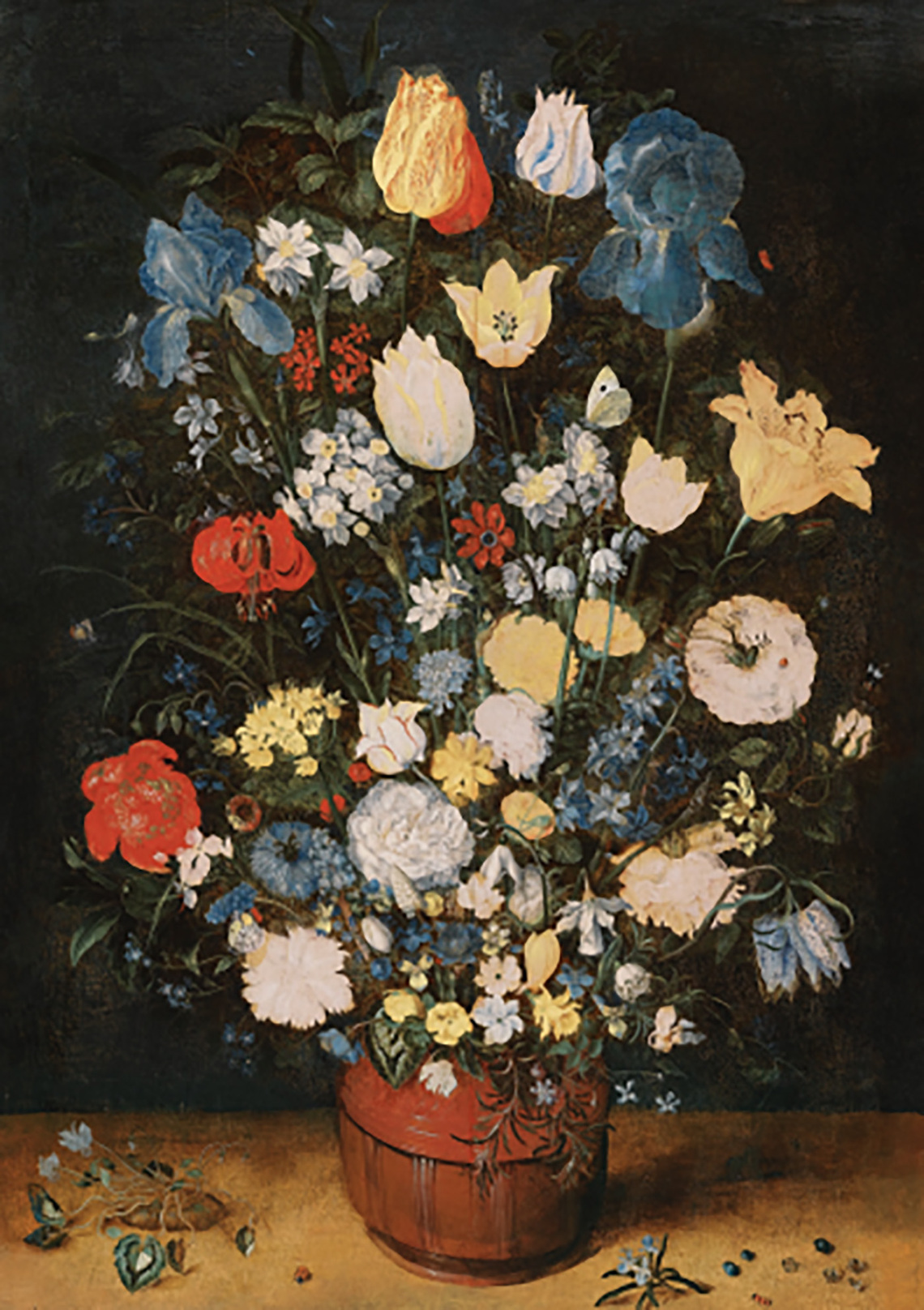Flowers in Earthenware Vase (Private Collection II)
| Object type | Painting |
| Genre | Flower Still-Life and Nature Study |
| Date | ca. 1607 |
| Dimensions | 65.6 x 46.5 cm |
| Support | Panel |
| Medium | Oil |
| Our attribution | Produced in Jan Brueghel's Studio |
| Other authorities | Drs. Fred G. Meijer (RKD, The Hague) as Jan Brueghel the Elder and studio (examined 2012) |
| Location/Most Recent Sale | London, Sotheby's, 4 July 2012 for 241,250 GBP |
| Tags | Insects, Vase, Coins, Flowers, Jewels, Shells |






Sotheby's Catalogue Note:
Although long considered a copy of the painting in the Kunsthistorisches Vienna (fig. 1), which Ertz dated to circa 1607, the Art Institute of Chicago's recent decision to sell this painting for the benefit of their acquisition fund has precipitated further study and reappraisal. The painting was inspected in the original in May 2012 by Drs. Fred G. Meijer of the Rijksbureau voor Kunsthistorische Documentatie in The Hague: Drs. Meijer has noted the excellent quality of, in particular, the irises and the tulips, which he considers too advanced in technique for a copyist and stylistically very similar to other works of the same date by Brueghel to which the panel is related, such as those in Vienna and Prague. From a technical point of view, Drs. Meijer views the very particular degradation of pigments as typical of Jan's flower still lifes from this date as, too, he does the composition which, with the removal of the two extensions at each margin, would see the blooms brought right up to the edge of the picture plane. The visible changes the artist has made to the vase further argue against Ertz's summation. Thus the type of composition, which dates to circa 1605-10, the very high quality of the execution of certain flowers, together with other aforementioned technical elements argue strongly for the authorship of Jan Brueghel the Elder himself in the years prior to 1610, which is to say prior to the arrival in the studio of his son Jan Brueghel the Younger, to whom some scholars had previously attributed the painting. Drs. Meijer has however pointed to several weaker areas of execution, such as the white rose in the centre, which he feels denote the collaboration of an assistant in the studio.
Brueghel has replaced the Vienna vase with a wide-bottomed version and removed the coin and ring from the lower right. Every other flower from the Vienna panel is replicated, though in a different position and in many cases with subtle changes of disposition. Brueghel has added a cabbage white and other insects, while removing others. He has elongated the earlier composition in Vienna and used a considerably larger panel (the Vienna panel measures 51 by 40 cm.) so that there is now an explosion of space between each bloom. This is particularly noticeable around the edges and towards the apex of the bouquet. Drs. Meijer has said that such elongation argues for a dating nearer 1610 than 1605.
Source: http://www.sothebys.com/en/auctions/ecatalogue/2012/old-master-british-p...